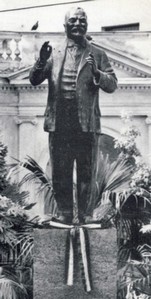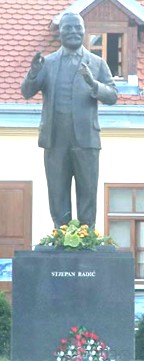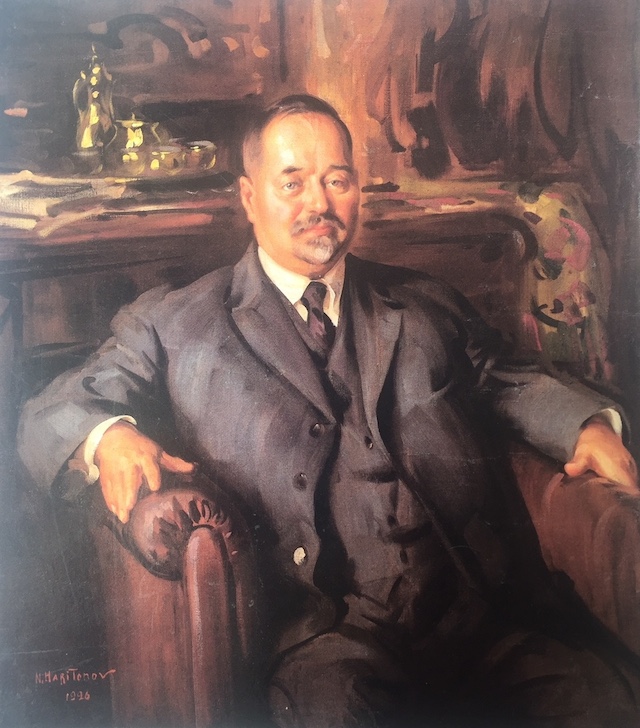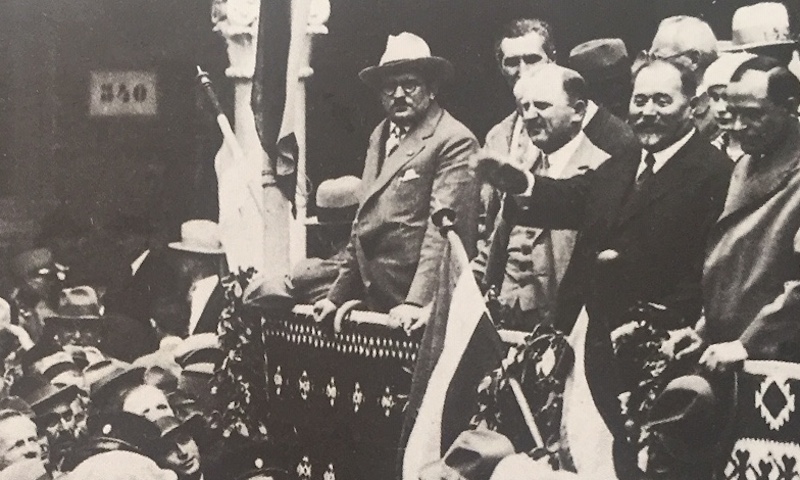THE RUSSIAN BRANCH OF OUR JELACIC'S
Written by STJEPAN RADIC
Hrvatsko Kolo, Zagreb, 1909, p. 278-304.
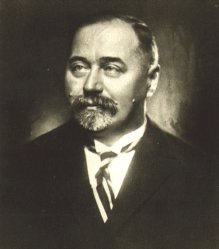
The name of this Jelacic was Franjo Luka, and he was educated at Viennese Jesuits, from where he escaped to Russia. One of his descendants, Franjo Josipovic Jelacic, was a famous surgeon (1808-1888) and as a university professor of Kazan has a great merit for founding the Kazan clinic, as we learn from the same encyclopedia.
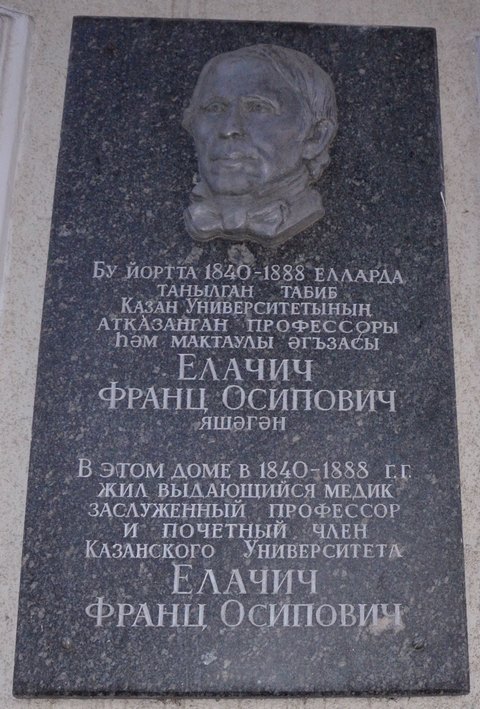
In this house during 1840-1888
lived distinguished physician
deserving professor
and honorable member of the Kazan University
Jelačič
Franc Osipovič
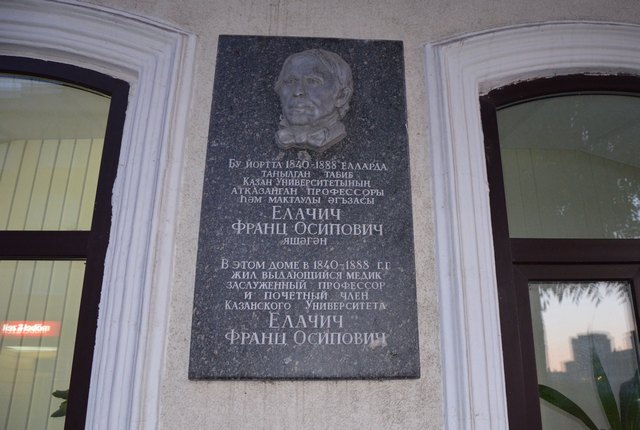
|
Franz Leopold (°1808 à Dorpat-Tartu / Estonie - 1888 à Kazan / Russie) étudia à l’université de Vilno (aujourd’hui Vilnius – Lituanie) où il obtint un doctorat de médecine en 1832. En 1834 il accéda à la chaire de médecine à l’université de Kazan, où il se spécialisa dans l’ophtalmologie. Après un voyage d'étude de neuf mois à l'étranger (Berlin, Vienne, Paris, Munich) au cours duquel il acheta du matériel médical, il fonda la clinique universitaire de Kazan, ce qui lui valu les félicitations du ministre en 1845. Il fut nommé professeur émérite en 1859 et membre d'honneur de l'université en 1864. Jusqu'alors, tous les Jelacic étaient catholiques. Afin de pouvoir épouser Maria Razumosky, russe orthodoxe, Franz-Leopold (ou Franz Ossipovitch Iellatchitch en russe) se convertit à la religion orthodoxe. Marié à Maria K. Razumovsky (1821-1881), il eut quatre enfants. Source: Jelacic / Le branche russe Ecrit par Michel Iellatchitch, France |
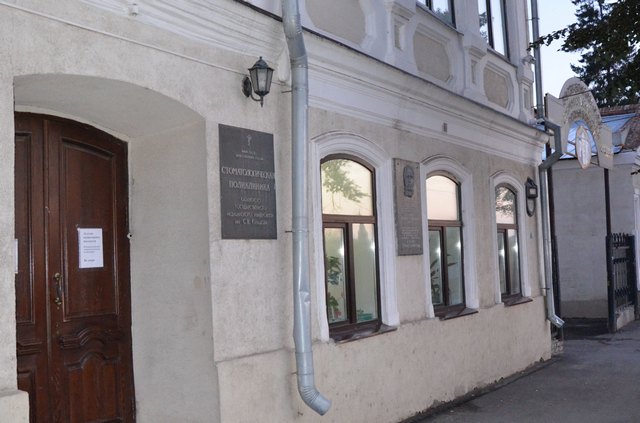
Photos by the courtesy of Dmitry Vedushenko, Russia, 2014.
Franc Osipovič Jelačič (Russian Wikipedia)
The plaque of Franc Ossipovič Jelačić unveiled arround 1994 in Kazan, Russia, by his great-grand-son Michel Iellatchitch,
living in France. Many thanks for the photo to his nephew, whose name is also Michel Iellatchitch.
As soon as this Franjo Jelacic married with a Pravoslav Russian, he accepted pravoslav faith (according to the laws of the time), and until that time our Jelacic's were Catholics. The son of Franjo - Aleksandar Francevic Jelacic, was a famous lawyer and the head of exceptionally respected and educated family of Russian Jelacic's. He had five grown up sons, and two of them were distinguished with their literary and educational work.
Russian Jelacic's preserved their Croatian traditions, and they are especially proud of their famous ban [viceroy] Jelacic. They sojourned already in Opatija, and also visited Zagreb, and of course, the Jelacic monument [on the Zagreb main square] in the first place. Aleksandar Jelacic is a liberal of English character, as was the case with almost all Russian thinkers in the 60s of the last [19th] century. Their sons belong to different political camps, but all of them are very important and extraordinarily educated people.
1. MIHAJLO JELACIC: THREE DRAMAS
The third son of Aleksandar Jelacic, Mihajlo, became reputed after his three theatric pieces: "Duke's palace," "Expropriation," and "Burnt vessels." [^1 M.A. Jelachich': Knyazhij dvor'. Ekspropriaciya. Sozhzhennye korabli. str 255. - ...S. Petersburg'. 1909. T-vo Hudzhestv. pechati. C. 2 Rub.] All these three dramas were published in the beginning of 1909, all of them deal with the most recent questions of the Russian contemporary life, all of them are written with great mastery from dramatists point of view, and all of them are very important for knowing contemporary Russia. In all of these works also author's thinking about important questions is reflected, and therefore they represent a valuable source of information about Mihajlo Jelacic and the whole noble Croato-Russian family. It would be valuable and necessary to see all three dramas also on Croatian stages, and its Croatian translation would be a contribution to Croatian drama literature. Our writers would find immediately a rare ideal, which would be much inspiring than nonslavic dramas.Now let us see in passing the content of these three dramas, and then let us translate literally several passages that reflect contemporary situation in Russia, as well as the view of the writer.
[...Here we skip more than 20 pages...]
2. EVGENIJ JELACIC
[p. 301] I do not know Mihajlo Jelacic personally. He lives far away from St. Petersburg, somewhere in the Samara gubernia [region] below Kazan, on the estate of his father. It seems that he was very unhappy in his life, and experienced a lots, and probably that is why he is such a deep psychologist. His younger brother Evgenij, at least as I used to know him, is a pure bliss and happiness. Everything that I read and hear about the influence of the spirit on human body, how wise ideas reflect on countenance, and how inner happiness transforms a human being - all this I saw at Evgenij Jelacic with my own eyes.The first time I met him was on his lecture delivered in a large hall, called "Solyanoj gorodok" [Solty town], where he spoke with such easiness about difficult question, about homeland of a man of the north, as if he tells us a magic eastern story. He had two lectures, both about two hours, with a 15 minute pause, and there was no any listener with expression of boredom on his face, and one could hear nothing but praise and expressions of satisfaction. The Russian community can be rightfully proud of such a lecturer.
Only since recently Evgenij Jelacic is more than thirty years old, but he is so deep in some branches of natural sciences, and carefully follows newest achievements in this field, so that in some areas he is already an authority. In any case, he represents a scientific poplarizer that I had no opportunity to either see or hear.
Evgenij Jelacic works continuously and indefatigably on a question related to Ambulant Museum of Teaching.
At first he had only several teaching instruments, that were circulating between several St. Petersburg teachers, deeply involved in intuititve instruction. Now this has become a large collection of thousands and thousands of teaching instruments, situated in a special building, systematically classified, which is continuously growing and improving, and being used far outside St. Petersburg. What is most important, this ambulant museum in St. Petersburg has become a center of about a hundred of similar regional museums, and besides this it supplies more and more primary schools with various teaching aids, starting with huge wall illustrations, to very rare animal preparations. To this end a museum has its own workshop and many lecturers, which work with apostolic zeal and dedication. Among them is also Evgenij Jelacic, in the first lines.
It is a great pleasure to see him and hear him, when he shows you one room after another in the museum, and when each object is being revived not only with his thorough knowledge, but also with his inexhaustible enthusiasm. You really feel that his enthusiasm is of divine origin, since only due to this supernatural force is it possible to obtain with so modest means such great successes.
Evegenij Jelacic is the same also in his apartment. Everything recalls his educative work and as soon you start to discuss with him about this, he is no more a meagre man, with untidy beard, and often with more than usual dresses. And when he sits, and especially when he stands up, and while speaking walks into his workshop, it seems as if he grew up, and his whole figure is flooded with an extraordinary ecstasy from his glowing eyes and enthusiasted soul.
Besides his study of natural sciences and besides his work on ambulant museum, Evgenij Jelacic is also occupied with writing for children, and especially for youngest children.
[Now follows one page describing his books and booklets for children, 1p]
So, why to count all these books, since it would be more useful to read or at least to examine this whole little library of natural sciences, which we, the Croats, have so much neglected, and which can be seen on every step.
With the breadth and depth of his education, with his enthusiasm for educational work among larges and most neglected masses of workers and peasants, with easiness of his narration and with his industriousness, Evgenij Jelacic is without any doubt such a cultural phenomenon which leaves deep traces even in a big nation, and for a small people he would create a new educational epoch. Let us hope that the youngest Jelacic, who is an enthusiasted pupil of his brother Evgenij, will pay a visit to his old motherland first of all at its University, and than also serve his little Croatia, in the region where so many Slavs carried their talents away into foregin lands that are even more developed after all.
This paper of Stjepan Radic was brought to our attention by professor Gordana Linke, Zagreb
Translated from Croatian by Darko Zubrinic (1999).
Mila Wod (yes, Wod, not `Wood', 1888-1968), created the monument of Stjepan Radic in 1929. The monument was placed on the main square in Petrinja (south of Zagreb) in 1936. The communist officials moved it from the main square, called the Radic Square, to the city parc, and during the 1991 Homeland War the monument has been destroyed and thrown into an orchard in the village of Cuncic. In 1998 the monument was discovered and transported into the iron foundry of works of art at the Academy of Fine Arts in Zagreb, where it has been renewed by means of a plaster copy from the Glyptotheque of the Croatian Academy of Sciences and Arts. Radic's monument has been placed again in Petrinja on December 28th, 1999.
Original text in Croatian:
Mila Wod je izradila kip Stjepana Radica godine 1929. Spomenik je prvi put na petrinjskom trgu postavljen 1936. Komunisticke vlasti su 1963. maknule spomenik s glavnoga trga koji je nosio Radicevo ime u gradski park, a u Domovinskom ratu 1991. spomenik je uništen i bacen u vocnjak u selu Cuncicu. Godine 1998. spomenik je pronaden i prevezen u ljevaonicu umjetnina na Akademiji likovnih umjetnosti gdje je obnovljen uz pomoc gipsanog otiska koji se nalazi u gliptoteci HAZU-a.
Radicev spomenik je ponovno postavljen u Petrinji dne 28. prosinca 1999.
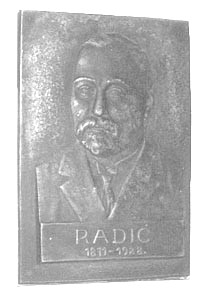
Mila Wod (1888-1968) also created a plaque of Stjepan Radic (1871-1928), which has been kept in the Museum of the town of Ilok. The plaque has been stolen from the museum during the Greater Serbian occupation of the town (1991-1997). Source
Mila Wod also made a medal "Hrvatska sveta godina - Croatian Sacred Year" in 1941.Matija Maša Vekić: Hrvatska kiparica Mila Wod, Zagreb 2019., p. 34
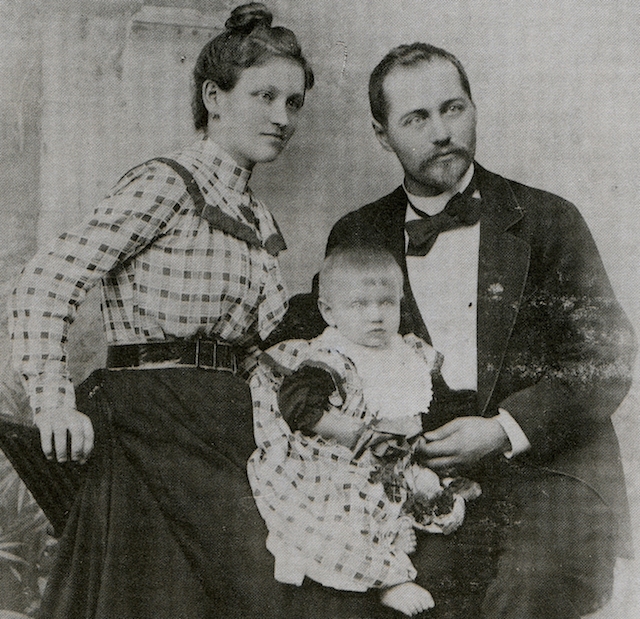
Stjepan Radić with his wife Marija (of the Czech origin) and daughter Milica. Photo from
Marijan Lipovac and Vlatka Banek: Hrvatsko-češko društvo / prvih 25 godina, Zagreb 2017, by the courtesy of Mr. Lipovac.
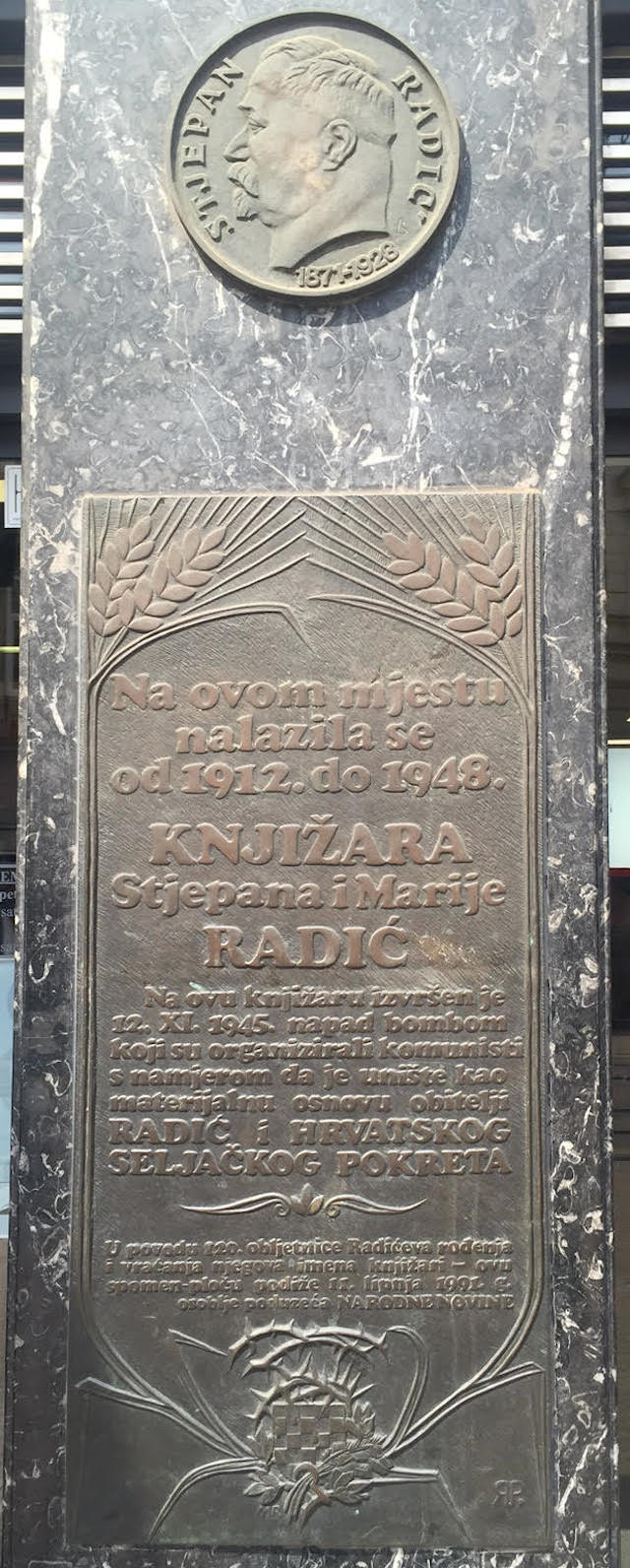
Memorial plaque in Zagreb, Jurišićeva 1a, commemorating the Bookshop of Stjepan and Marija Radić
from 1912-1948. Since this was a part of the building of Elsa-Fluid House (built in 1906)
owned by Eugen Viktor Feller, we believe that Feller was one of principal sponsors of the Radić
bookshop. For example, Feller's Elsa-fluid products have been advertised in Raditch's
Bozicnica Almanch (Christmas Almanach). In November 1945, communists organized a bomb attack
on the bookshop in order to destroy the material basis of descendants of the family of Radic.
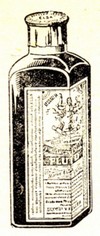
An
advertisment for Elsa
fluid, published in
Bozicnica, seljacki
prosvjetno-politicki sbornik i kalendar za prostu godinu 1927,
ed. by Stjepan
Radic, Zagreb 1926, when Willy
Feller was at the age of 20.
(Radic's publishing house was in Jurisiceva 1a, that is, in the Elsa
Fluid dom)
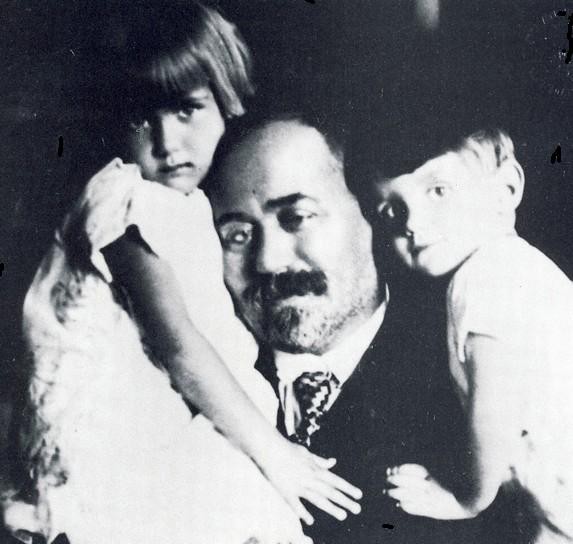
Stjepan Radiić with his grandchildren

Croatian banknote of 200 HRK (Hrvatska kuna - Croatian
kuna), with the portrait of
Stjepan Radic.
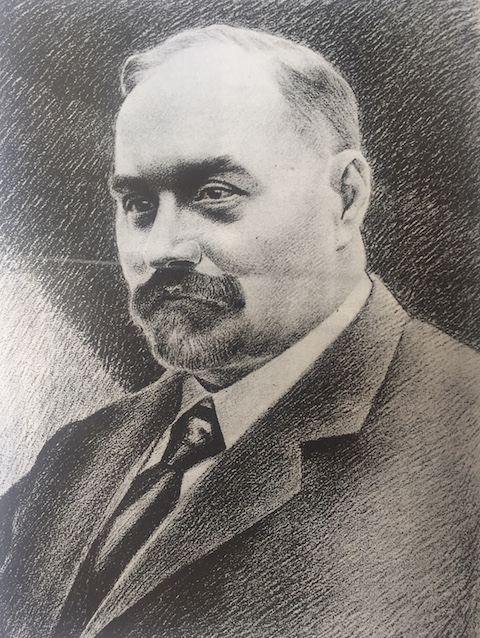
Jozo Kljaković portretirao je
Stjepana Radića (1871.-1928.)
Izvor fotografije [Stjepan Radić]
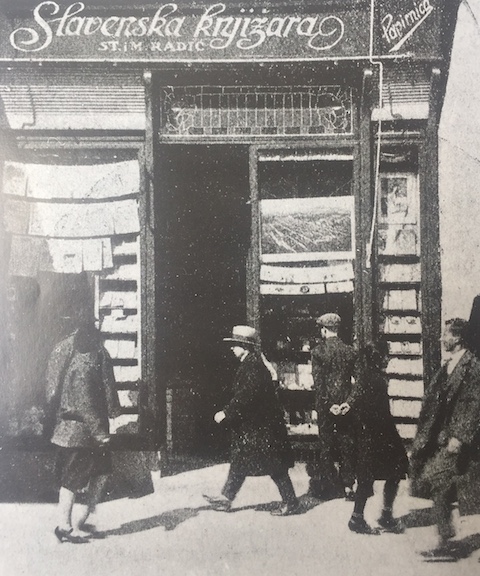
Slavenska knjižara Stjepana i Marije Radić u Jurišićevoj ulici 1, Zagreb
Slavic bookshop of Stjepan and Marija Radić in Zagreb. Source [Stjepan Radić].

pen
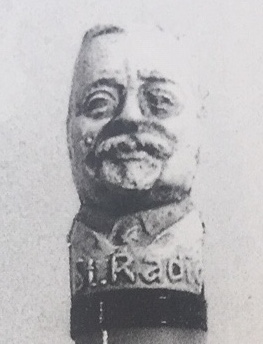
Penkala Factory in Zagreb was the largest such factory in the world.
Source [Stjepan Radić].

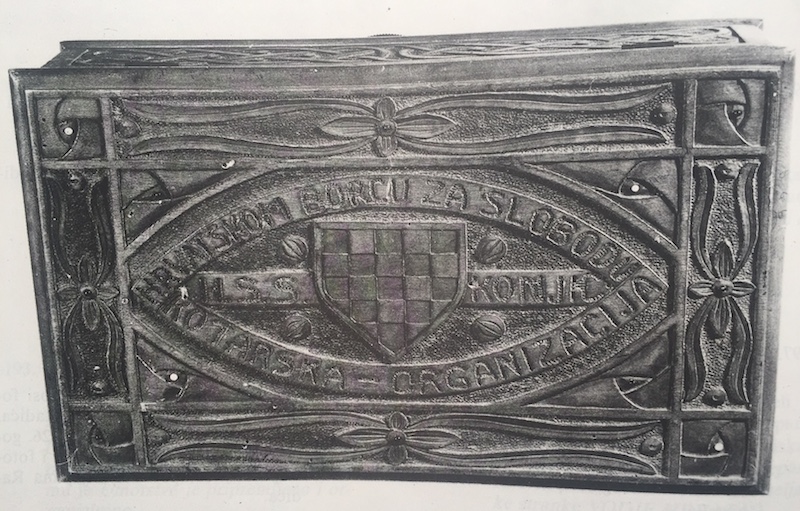
Hrvatskom borcu za slobodu (To Croatian fighter for freedom)
H.S.S. Konjic (Croatian Peasant Society, Konjic)
kotarska organizacija (regional organization)
Source [Stjepan Radić].
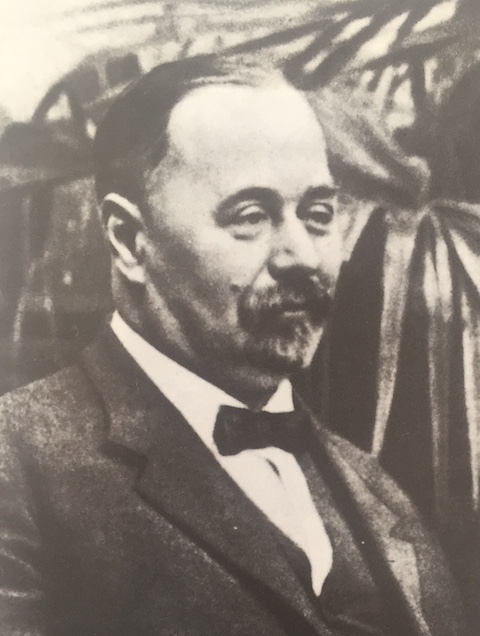
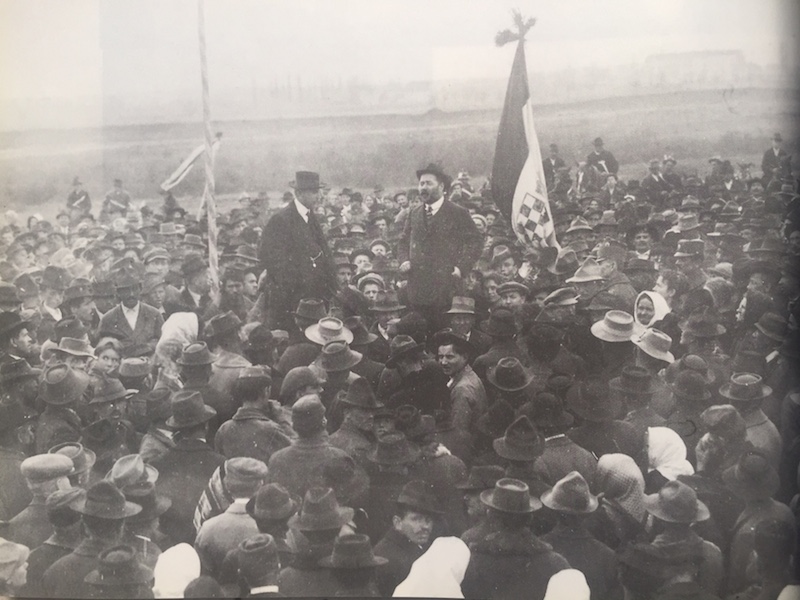 Stjepan Radić i Josip Predavec u Sisku (Galdovo)
Stjepan Radić i Josip Predavec u Sisku (Galdovo)
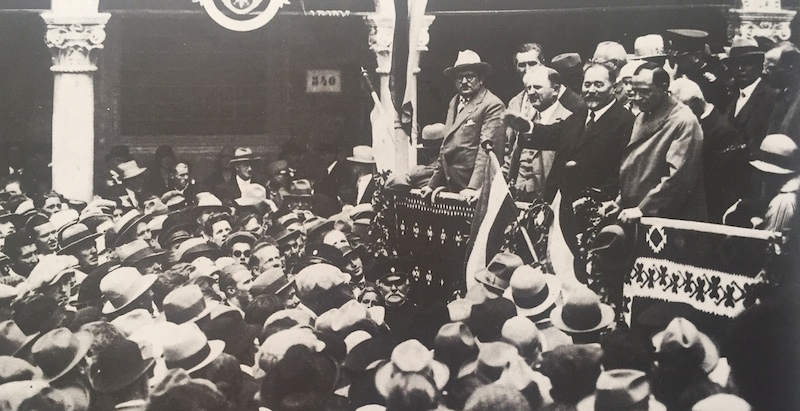
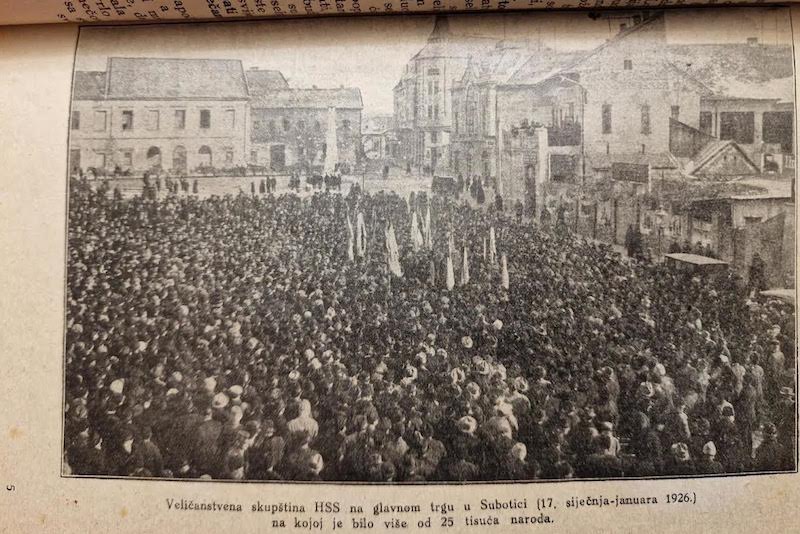
Magnificent assembly of HSS (Hrvatska seljačka stranka, i.e., Croatian Peasant Party) at the main square in Subotica,
17th January 1926, where more than 25000 people participated. Photo published in Božićnica 1927.
The then president of the party was Stjepan Radić (1871-1928), who was
two years later mortally wounded in the Belgrade parliament of ex-Yu.
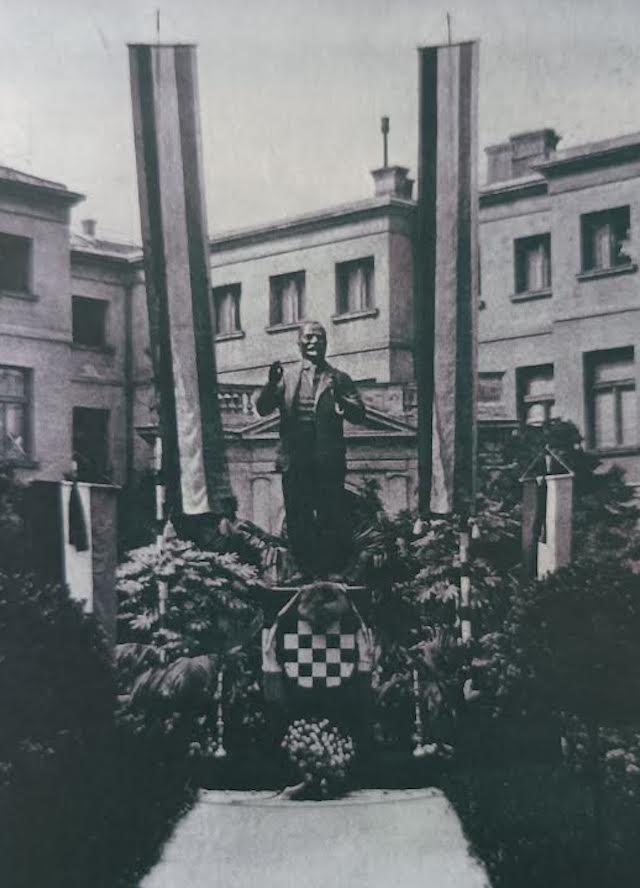
Stjepan Radić, his first monument was carved in 1929 by Croatian sculptress Mila Wod (yes, one "o"),
here exhibited in 1935 in Zagreb, in the then Croatian Peasant House (now Gallery of Modern Art).
When the monument was placed in the town of Petrinja in 1936, the solemn opening was attended by
thirty thousand people, when Petrinja had five thousand citizens only!
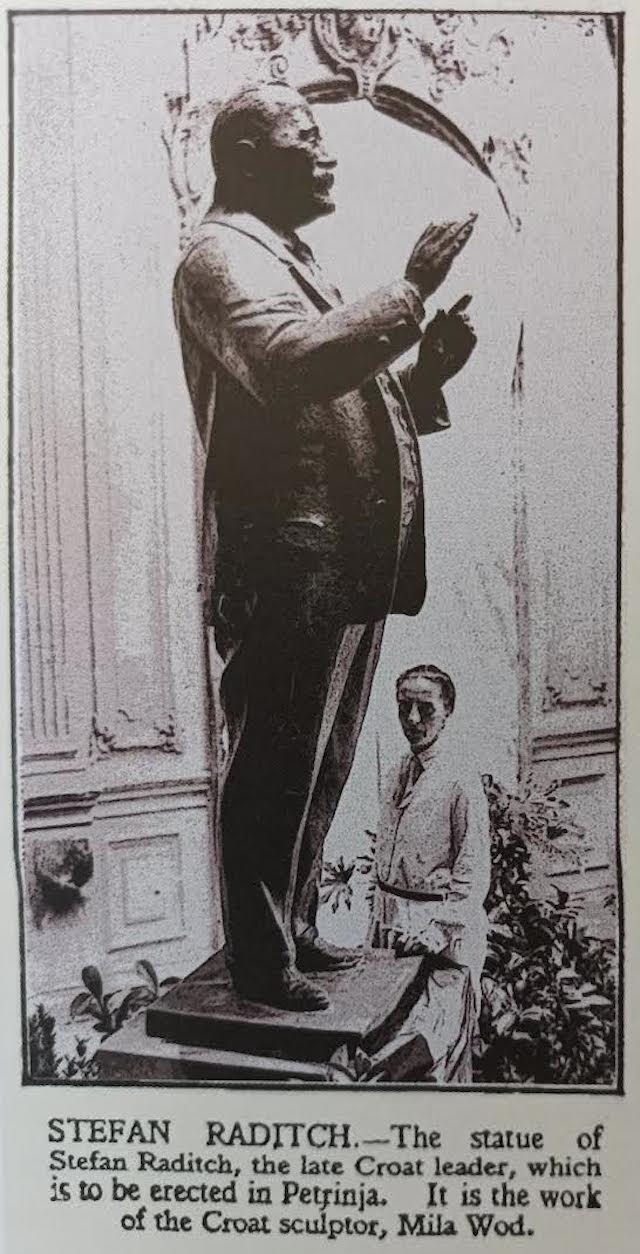
The Times, London, reported about the assasination of Stjepan Radić,
and about his statue carved by Mila Wod. The photo was taken in Zagreb, inside the then
Croatian Peasant House.
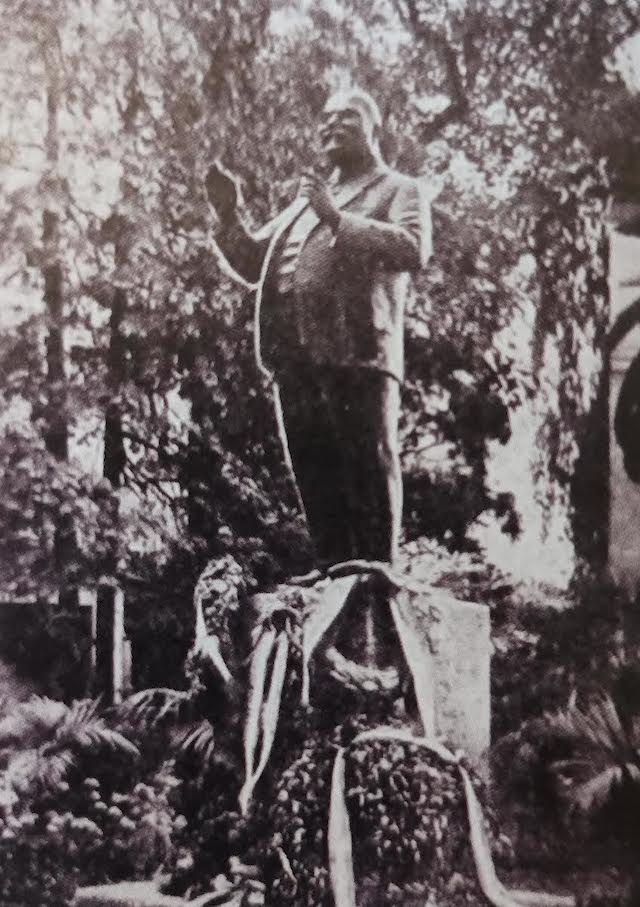
This monument of Stjepan Radić, carved by Mila Wod in 1929, was the first one dedicated to him,
as well as the first public monument in Croatia carved by a woman.
Mila Wod's father was of the Czech origin, while her mother was Croatian.
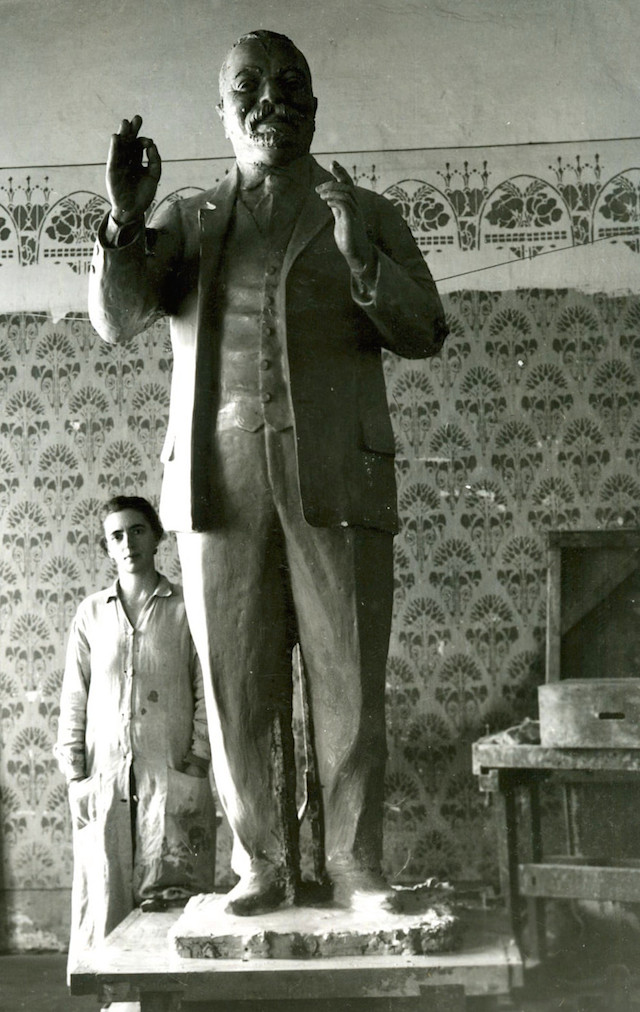
Stjepan Radić and Mila Wod in Petrinja in 1929, when the statue was completed,
just a year after his assassination in the Belgrade Parliament.
For additional information about the Russian branch of the Jelacic family see
Tatjana Puskadija-Ribkin: Emigranti iz Rusije u kulturnom i znanstvenom zivotu Zagreba, Prosvjeta, Zagreb 2006; Russian translation Tat'yana Puškadiya - Rybikina: Emmigranty iz Rossii v naučnoj i kul'turnoj žizni Zagreba, Zagreb, 2007, Izdatel'stvo: Posol'stvo Rossijskoj Federacii v Respublike Horvatii.
HSS u Boki kotorskoj
Seal of H.S.S. (Hrvatska seljačka stranka - Croatian Peasant Party)
in the town of Tivat in Boka kotorska, 1928. The founder and leader of
H.S.S. was Stjepan Radic.
Note its Croatian Coat of Arms.
Photo from [Vidmarovic, Prilog
povijesti Hrvata Gornje i Donje Lastve].
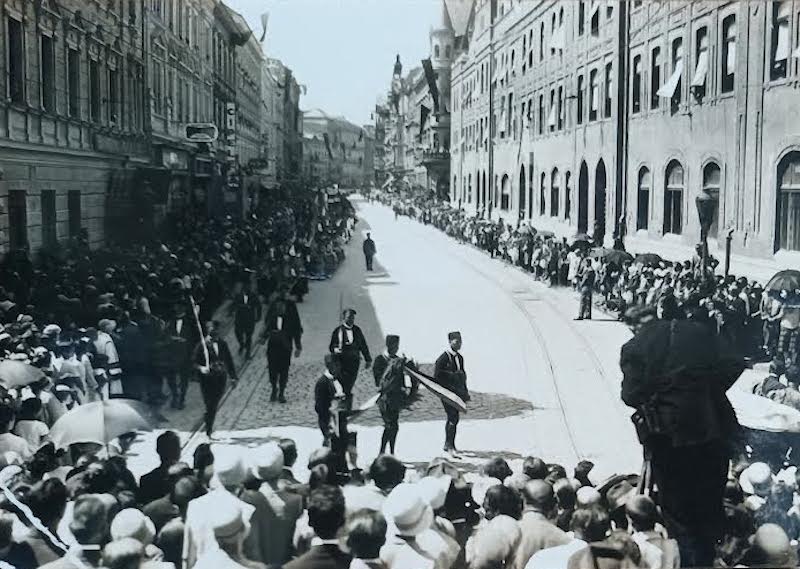
Plemenito Tielo Bokeljske mornarice (Noble Body of the Bokelj Marine) in Zagreb,
during the funeral of Stjepan Radić on 12th August 1928.
Photo by the courtesy of Zvonimir Deković, Donja Lastva, Boka kotorska.
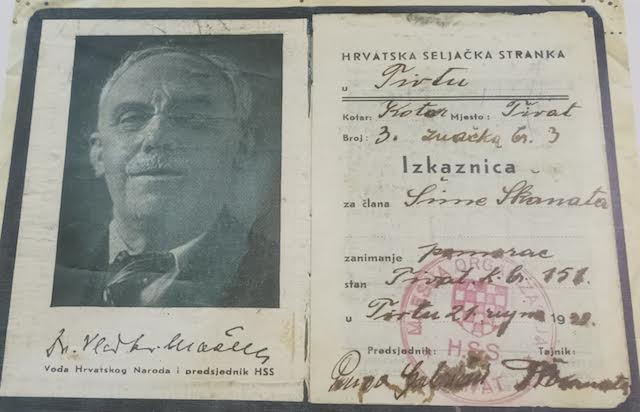
Hrvatska Seljačka Stranka u Tivtu, iskaznica za Šime Skanata, 1939.
Lijevo dr. Vladko Maček.
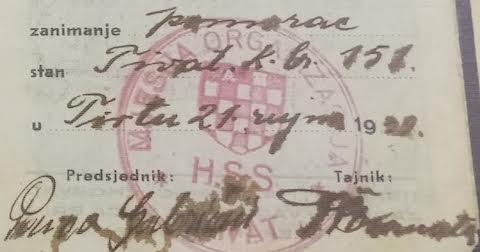
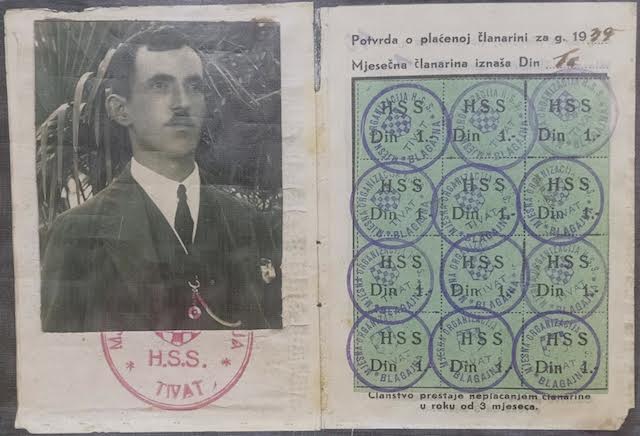
Šime Škanat, Tivat, pomorac
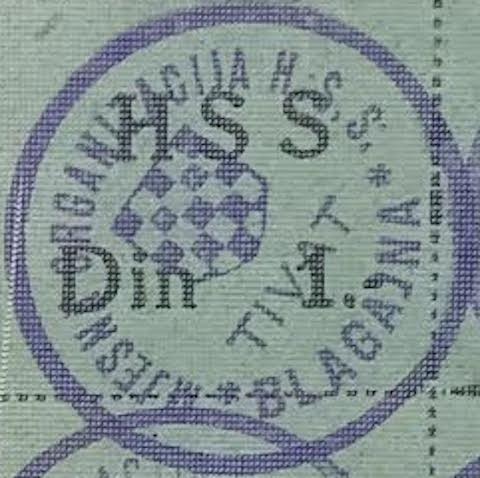
Mjesna organizacija HSS-a, Tivat
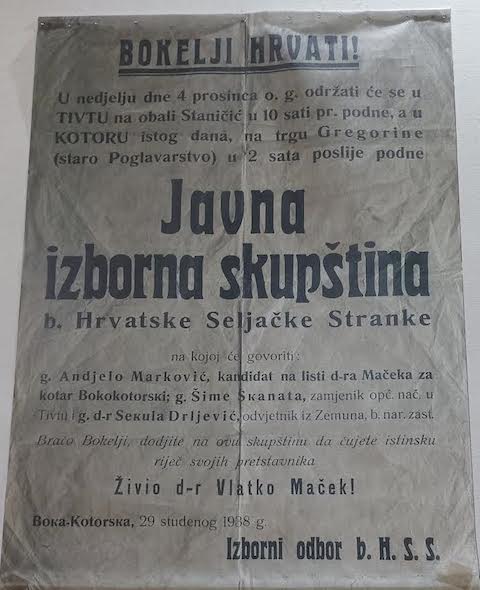
Boka Croats! ... Public Electoral Assembly of the Croatian Peasant Party in Tivat and in Kotor in 1938,
with Andjelo Marković, Šime Škanata, dr. Sekula Drljević (from Zemun) as candidates.
Stjepan Radic: his life, his party, his politics, by Dr. Ante Cuvalo
Stjepan Radić i
Mahatma Gandhi
Dr. Mladen Ibler: Stjepan
Radić u viđenju danske književnice Karin Michaelis
Mijo Ivurek: Kratka povijest HSS-a
Vladimir Radić: Zločin od 20. Lipnja i Međunarodna Štampa, obranjeno kao dizertacija na Školi medjunarodnih nauka mjeseca svibnja 1931, tiskano u Parizu (detaljna studija o ubojstvu Stjepana Radića u beogradskom Parlamentu)
Ubojstvo Stjepana Radića u beogradskom parlamentu 1928.
Obitelji Radić i Vandekar
Marijan Lipovac i Jana Radić: Dobro ugođena politika / Sjećanja Stjepana Radića mlađeg, Zagreb 2020.
Mila Wod
Darija Alujević: Mila Wod - prva hrvatska kiparica, MH Petrinja, 2023.
Hrvatski političar i mučenik Stjepan Radić (1871.-1928.) u svojoj knjizi Savremena Europa, objavljenoj u Zagrebu 1905., spominje na str. 135 i 136 da je znameniti češki kralj i rimsko-njemački car Karlo IV., s dopuštenjem pape Klementa VI. pozvao 1348. godine hrvatske glagoljaše benediktince u Prag, u samostan Emaus (ili na Slovanech). Oni su 1372., drugog dana korizme, u tom samostanu održali svečanu misu u nazočnosti češkoga kralja i praškog biskupa. Godine 1390. je i poljski kralj Jagiello sa suprugom Jadwigom (koja ima i hrvatske korijene) ishodio dopuštenje kod pape za dolazak hrvatskih glagoljaša iz Praga u Krakow (u predgrađu Kleparž), koji su služili slavensku misu još i u drugoj polovici 16. st., na veliki ponos Poljacima. Zahvaljujemo dr. Željku Holjevcu i Biserki Draganić, bivšoj predsjednici DPG-a, na dragocjenom podatku da je i Stjepan Radić pisao o hrvatskim glagoljašima.
Croatia - its History, Culture and Science
